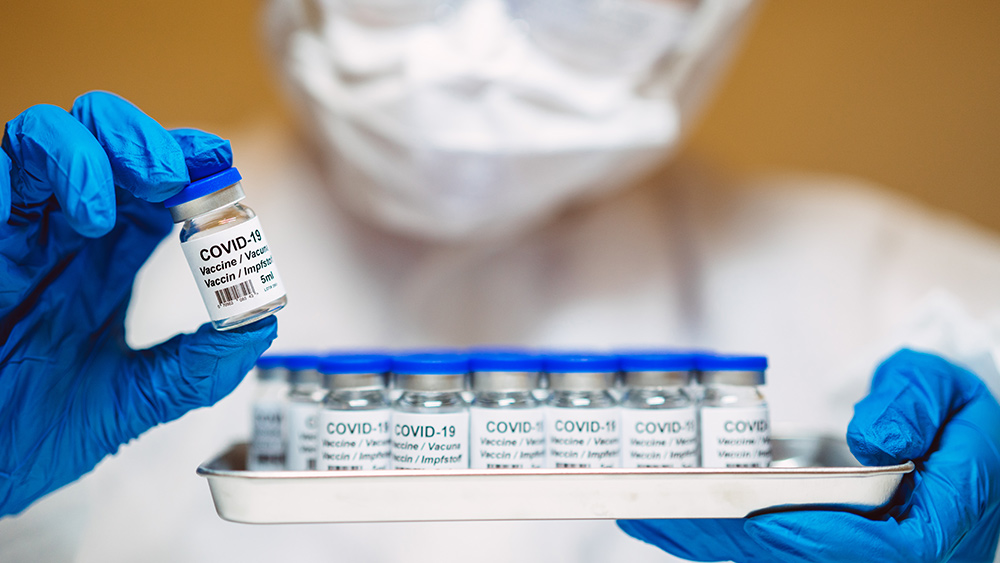 Parler
Parler Gab
Gab
- North Korea has amassed enough fissile material for up to 90 nuclear warheads, a sharp increase from last year’s estimates, with enrichment operations expanding to a covert site at Kangson.
- A Congressional report reveals North Korea has assembled around 50 warheads and is advancing missile capabilities with likely Russian assistance, posing a global threat.
- The IAEA warns North Korea’s nuclear program is "completely off the charts," with multiple hidden facilities, reactivated test sites, and plans for mass-producing tactical nukes.
- Russia’s support for North Korea’s missile program in exchange for military aid in Ukraine could accelerate Pyongyang’s WMD advancements within years, undermining global security.
- North Korea’s doctrine now permits nuclear first strikes, with missiles capable of hitting the U.S. mainland, while Seoul faces catastrophic risk from a single attack.
A nuclear program "completely off the charts"
The International Atomic Energy Agency (IAEA) has sounded the alarm, with Director General Rafael Grossi warning that North Korea’s nuclear ambitions have "spawned exponentially" beyond Yongbyon. "It has spawned exponentially. The program is no longer, you know, the complex at Yongbyon. It’s Kangson. It’s other places also in the country," Grossi told the Council on Foreign Relations in April, describing a sprawling network of enrichment facilities, a light-water reactor, and ongoing plutonium reprocessing. "You cannot have a country like this, which is completely off the charts with this nuclear arsenal," he stressed, lamenting the world’s inability to monitor safety protocols in a regime that ejected IAEA inspectors in 2009. The CRS report confirms that North Korea has reactivated its Punggye-ri nuclear test site and is "postured to conduct a seventh nuclear test at a time of its choosing." Meanwhile, Kim Jong-un’s regime has openly declared its intent to "mass produce" tactical nuclear weapons, with state media boasting of miniaturized warheads deployable on missiles, drones, and even underwater vehicles.Russia’s dangerous alliance with Pyongyang
Perhaps most alarming is Moscow’s role in supercharging North Korea’s missile program. As payment for supplying artillery shells and troops to Russia’s war in Ukraine, analysts warn that Pyongyang will likely receive missile technology missile technology from the Kremlin. The commander of U.S. forces in South Korea testified to Congress in April that Russian aid could lead to "advancements" in North Korea’s WMD capabilities within three to five years. This collusion between two of America’s most aggressive adversaries underscores the failure of decades of diplomatic "containment" strategies. Despite UN sanctions and high-level talks, including former President Trump’s much-hyped summits with Kim, North Korea has only accelerated its nuclear buildup. "The way that [diplomacy] unraveled stung the North Koreans," noted Samuel Ramani of the Royal United Services Institute, highlighting Pyongyang’s hardened stance.A direct threat to South Korea and beyond
North Korea’s nuclear doctrine now explicitly allows for first strikes if the regime perceives a threat to its survival. Its growing arsenal of ballistic missiles—tested four times in 2023 alone—includes intercontinental models capable of reaching the U.S. mainland. CRS warns that Pyongyang’s "precision guided tactical weapons" could devastate U.S. and South Korean military assets, while its submarine-launched systems threaten regional stability. South Korea, where over 50% of the population now lives in the greater Seoul area, faces a nightmare scenario: a single nuclear strike could decimate its economic and political heartland. Meanwhile, the U.S. remains locked in a dangerous game of deterrence. The rapid escalation of North Korea’s nuclear program, fueled by Russian collaboration and enabled by failed diplomacy, demands urgent action. With Kim Jong-un pursuing pursuing a "warfighting capability" and the IAEA blind to his activities, the risks of miscalculation or deliberate aggression have never been higher. Sources for this article include: Breitbart.com Congress.gov News.USNI.org Newsweek.comICE arrests Mexican national who threatened to kill President Trump in handwritten letter
By Ramon Tomey // Share
By Finn Heartley // Share
Governments continue to obscure COVID-19 vaccine data amid rising concerns over excess deaths
By patricklewis // Share
Tech giant Microsoft backs EXTINCTION with its support of carbon capture programs
By ramontomeydw // Share
Germany to resume arms exports to Israel despite repeated ceasefire violations
By isabelle // Share










